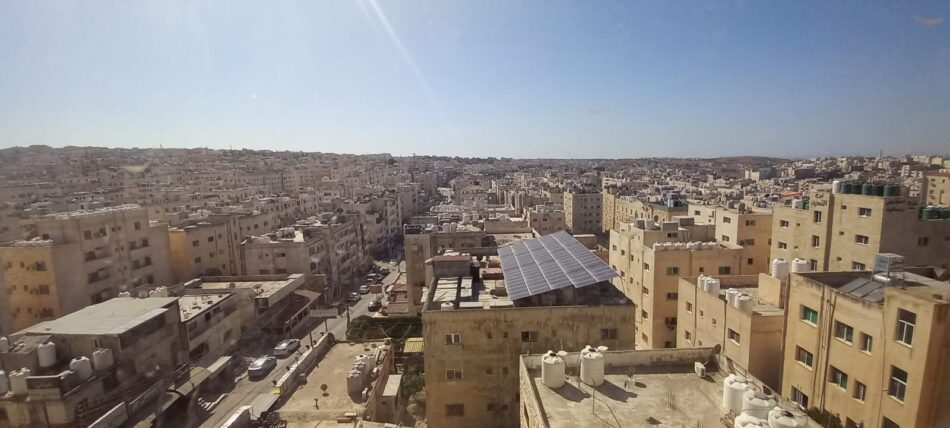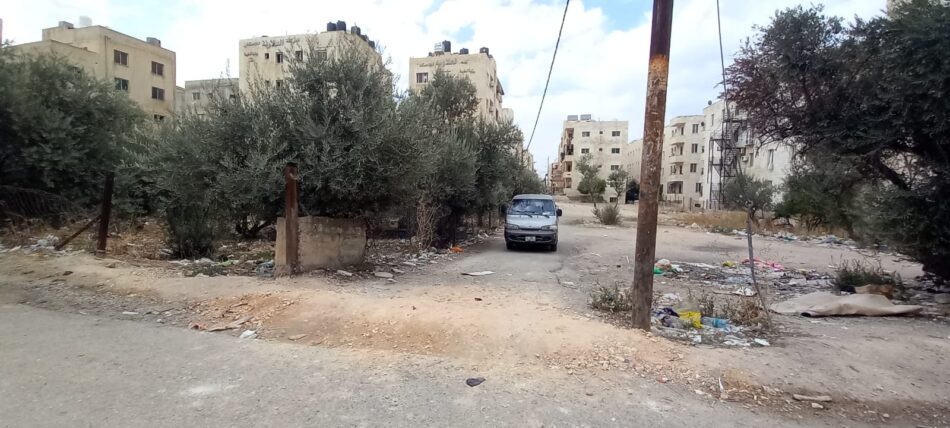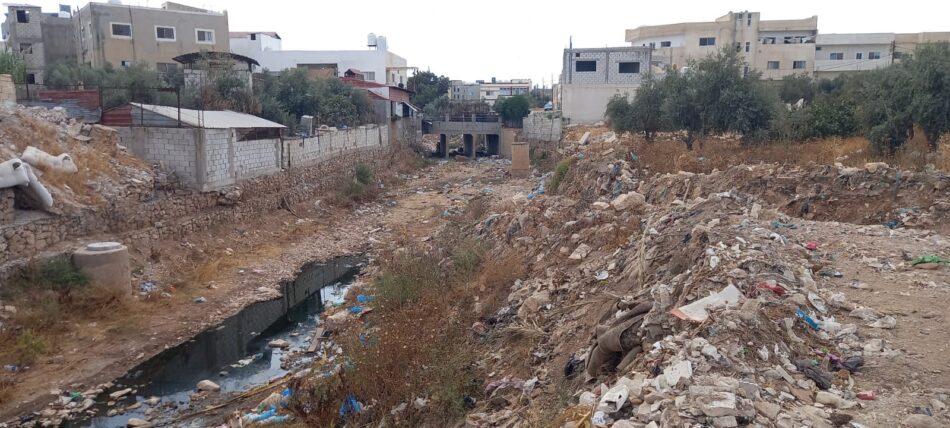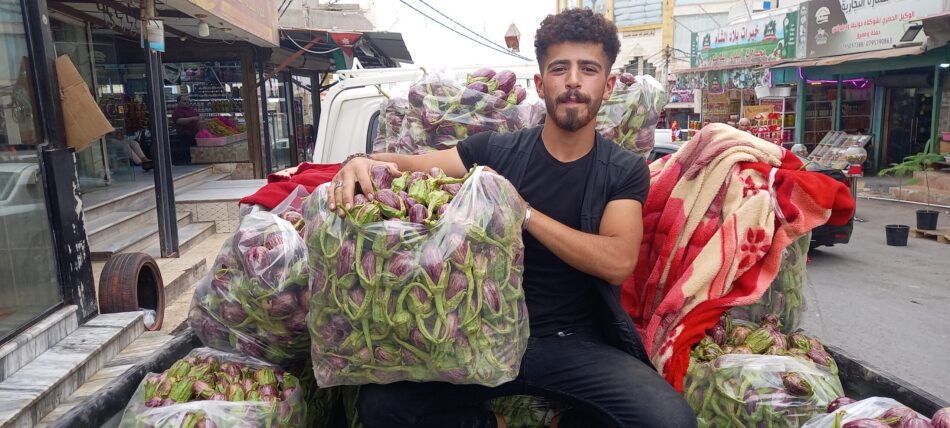IWMI is working to inform the humanitarian response to climate-based vulnerabilities in Jordan through anticipatory action.
by Luisa Chantler Edmond, Princeton in Asia Fellow

Jordan is located in the arid desert of northern Arabia and borders many different countries, including Iraq, Israel, Saudi Arabia, Syria, and the occupied Palestinian West Bank territory. Complex emergencies in Jordan’s neighboring countries have resulted in the country hosting the world’s second-highest number of refugees per capita. These emergencies, characterized by prolonged periods of political instability and conflict, are crises that demand a coordinated humanitarian response that holistically supports refugees and displaced people who have been forced to flee.
During last year’s COP27, His Majesty King Abdullah II of Jordan announced the Climate-Refugee Nexus initiative, an initiative that will prioritize support for refugee-hosting countries disproportionately impacted by the climate crisis. Jordan is affected by many regional conflicts and the initiative marks the country’s role and experience as a host to millions of refugees. At that same time, as a co-leader of CGIAR’s Fragility, Conflict, and Migration initiative (FCM), IWMI has been supporting the government of Jordan by conducting research to assess water and climate-based vulnerabilities in Jordanian refugee hosting communities. The research activity, Anticipatory approaches in Host communities for Emergency preparedness and Disaster Mitigation (AHEAD), is part of FCM’s work to inform the humanitarian response to complex emergencies. The first stage of this research is to conduct a case study of refugee hosting communities in and around the Northern Jordanian city of Irbid.
Challenges facing refugees and host communities in Jordan
There are currently over 730,000 refugees registered with the UNHCR (The UN Refugee Agency) in Jordan, roughly 87% of whom are Syrian. Beginning in 2011, civil war in Syria forced thousands of people to cross the border into Jordan and seek refuge from the conflict. “Today, Syrian refugees account for nearly 6% of Jordan’s population.”
At first, many of these refugees settled in large UN-supported camps in Azraq and Za’atari. Over time these camps have grown and solidified; what began as sprawling tented settlements have been replaced by ordered lanes of prefabricated shelters. While camps like Za’atari, one of the world’s largest refugee camps, house thousands of people, more than 80% of Jordanian refugees now make their home in the country’s urban centers, particularly Amman and Irbid.
Between 2012 and 2022, the population of the city of Irbid increased by 34%, a number which can be largely attributed to the arrival of Syrian refugees. The resultant crowding in Jordan’s urban environments exerts significant pressure on the communities that make the cities their home. In most cases, refugees move to urban areas in search of economic opportunity and employment. Unfortunately, for a number of reasons, neither opportunity nor employment is guaranteed upon arrival. Instead, many refugees living in urban areas are forced to contend with a decrease in food and UN cash assistance as well as exorbitantly high rental charges.

Why focus on Irbid?
Jordan is also the world’s second most water-scarce nation. Drought conditions lead to issues in groundwater depletion, threaten crop irrigation, and increase the risk of flash flooding during the increasingly unpredictable winter rainy season. The consistent cycles of flooding that plague Irbid exact a heavy toll on the community. Progressively hot and dry summers harden the soil so much that winter rain cannot infiltrate the ground. Therefore, the water that could otherwise relieve the dehydrated agricultural sector or recharge water sources is lost as flash floods. Residents of Irbid complain that this flash flooding pours into school buildings, damages infrastructure, overflows sewage networks, and in some particularly low-lying areas, claim homes.
Cyclical flooding means that portions of Irbid’s population must search for alternative shelter, seeking safety from the persistent intrusion of polluted water. As a result, the city’s housing market, already under pressure due to the rapidly growing population and urbanization, is stretched even further. For people already dealing with the long-term impact of forced displacement, flooding is yet another challenge of a compound crisis. Due to the pervasive and diverse challenges faced in Irbid, IWMI agreed with UNHCR that the first Jordanian case study should focus on Irbid’s urban and peri-urban communities.

Is Anticipatory Action the solution?
Anticipatory action (AA) is a set of actions taken to prevent or mitigate disaster before its impacts are felt. This proactive approach to disaster prevention is quickly becoming a central focus of climate adaptation policies being planned by many governments, humanitarian and development organizations, and NGOs.
IWMI believes that assessing climate and water-related vulnerabilities facing refugees and host communities in Irbid will advance the development and management of anticipatory action practices. The hope is that identifying these challenges will help the successful implementation of recommended policies and practices and build climate resilience in Irbid, for both Syrian refugees and Jordanian hosts.
There is very little research concerning how AA and Disaster Risk Reduction (DRR) can take forcibly displaced populations into account. IWMI’s research activity, Anticipatory approaches in Host communities for emergency preparedness and Disaster Mitigation (AHEAD), addresses this knowledge gap by studying the climate and water-related vulnerabilities of displaced people in host communities. IWMI’s research will contribute to the development of an Integrated Host Community Vulnerability Framework (IHCVF) which will address specific AA community needs.

Irbid through the eyes of the people
Initial focus groups run in Irbid have revealed a variety of worries and concerns held by both Jordanians and Syrians living in Irbid:
“Unemployment is a huge problem for us. There are more workers than jobs. At the same time, we are experiencing changes in rainfall patterns and long periods of drought which negatively affect agricultural production, a major industry in this area. Crop production is decreasing rapidly causing a loss of income from farming, while the increasing numbers of people seeking agricultural work to survive drives unemployment up and income down.”
These remarks show the interconnectedness of climate stress and socio-economic challenges in Irbid. In another focus group, Syrian refugees reported that they “… are engaged in agricultural work and receive support from the UNHCR. However, the amount of aid has decreased significantly since we first arrived in Jordan. If we do not work, we will not be able to live.”
Each of the focus groups held in Irbid so far have identified increases in unemployment, rent, and environmental degradation as the major challenges to their communities. Many of the interviewees were also quick to identify a lack of hygiene, due to faulty sewage and waste systems, as increasing the spread of diseases in the city.
What’s next for refugee and host communities?
Clearly, well-researched, timely, and accurate data is required to better understand the impact of water and climate-based challenges on forcibly displaced people and their host communities. The Irbid case study reinforces the need for AA to reduce the population’s susceptibility to the detrimental impacts of water and climate stress. If properly implemented, well-planned and financed AA protocols in refugee-hosting communities can build long-term climate resilience.
Meanwhile, the climate crisis continues to escalate, with climate-related disasters claiming livelihoods and lives across the globe. According to the UNHCR, as of mid-2023, there are 110 million forcibly displaced people worldwide. This staggering number is yet another reminder of why research into anticipatory action in hosting communities is so important; we must do the work to safeguard millions of vulnerable people across the globe, now.
The Kingdom of Jordan’s announcement of the Climate-Refugee initiative in Sharm El Sheikh last year demonstrates the commitment being made by participating countries, the private sector, finance and development institutions, and international organizations, to support climate-refugee adaptation and resilience. There will be further announcements regarding the initiative at the start of COP28.
As a co-lead of CGIAR’s FCM initiative, IWMI will continue to inform the humanitarian response to complex emergencies facing people in fragile and conflict-affected settings. “Analyzing water and climate vulnerabilities in Jordan, together with and in support of local and national authorities, will enhance the livelihoods of many vulnerable people” – Sandra Ruckstuhl, IWMI Senior Researcher and FCM initiative co-lead. For more information on IWMI’s work within the FCM initiative contact Sandra Ruckstuhl, at s.ruckstuhl@cgiar.org.

